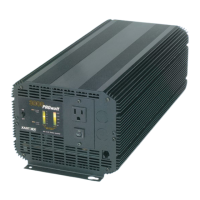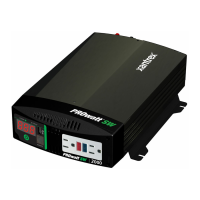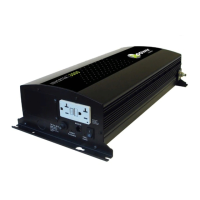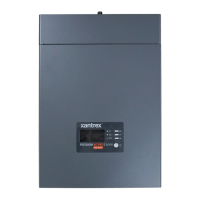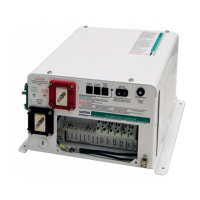PROSINE 2.0 INVERTER•CHARGER USER’S MANUAL
82
445-0089-01-01
begin. To drive these loads, either a small companion load must be used to
bring the inverter out of its search mode, or the inverter may be programmed
to remain on by defeating the search mode feature. See the “Configure
PROsine—Basic Menu‚” on page 47 and the “Configure PROsine—
Advanced Menu‚” on page 48 for ways to solve this problem.
Clocks
The inverter’s crystal-controlled oscillator keeps the frequency accurate to
within a few seconds a day. Most clocks do not draw enough power to trigger
the load sensing circuit. In order to operate without other loads present, the
load sensing will have to be defeated. See “Configure PROsine—Basic
Menu‚” on page 47 and “Configure PROsine—Advanced Menu‚” on page 48
for ways to do this. The best solution is to buy a battery-operated clock or a
clock that is not dependent on line frequency or voltage. Any clock with a
crystal-controlled oscillator will probably work fine.
Searching
If the amount of power a load draws decreases after it turns on, and if this “on”
load is less than the load sensing threshold, it will be turned alternately on and
off by the inverter. Incandescent light bulbs may present this problem when
the search threshold is set near the wattage rating of the bulb. The solution is
to reduce the load sense power threshold.
Electronics
AM radios will pick up noise, especially on the lower portion of their band.
Inexpensive tape recorders are likely to pick up a buzz.
Computers
When the inverter is called on to start a large load—particularly a motor
load—the output voltage may dip briefly. This dip may cause computers
powered by the inverter to crash.

